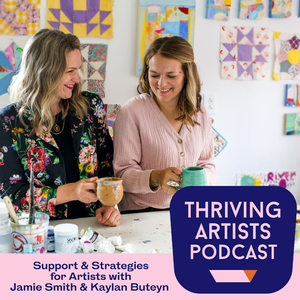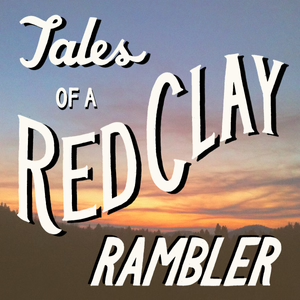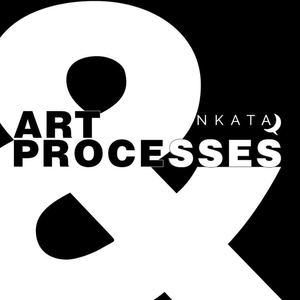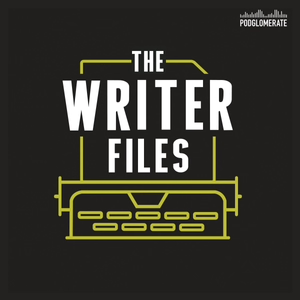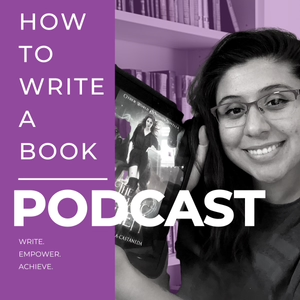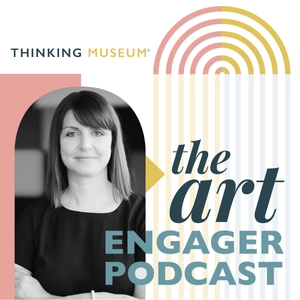
What if objects could talk with Hannah Cushion
03/09/23 • 39 min
1 Listener
I have a guest for you today on the show. I’m really happy to be talking to Hannah Cushion about her work as an artist and educator.
Hannah is an artist and museum educator working in London and Oxfordshire in the UK. Her work is interested in themes around archiving and preservation. She’s interested in why we keep the things we keep and who we're keeping them for.
Since receiving a creative practice grant from Arts Council England in 2021, Hannah has been looking at ways to directly connect her museum practice with her art practice.
This has led to the development of the Memory Bank Project, a collection of stories and memories connected to everyday objects.
In our chat today, Hannah and I discuss how inclusivity, curiosity, and the opportunity to collaborate with people and to create meaningful connections with objects and between people are really important values in her practice.
Museum labels tell us one story but what if the objects themselves could talk? How do we encourage people to include their own stories and experiences when we talk about objects?
As this project develops Hannah is exploring how she can adapt her skills as a facilitator to her role as a story collector.
We talk about what the Memory Bank Project is, how it works and how Hannah encourages participants to share their personal connections, stories, experiences and memories around an object. And we tell you how you can take part too!
So here it is, enjoy!
Links
Episode Web Page
https://www.hannahcushion.com/the-memory-bank
Instagram: @hannahcushionartist @thememorybankproject
Download the NEW resource - how to look at art (slowly)
Download the Ultimate Thinking Routine List
Join the Slow Looking Club Community on Facebook
Curated newsletter by Claire Bown
I have a guest for you today on the show. I’m really happy to be talking to Hannah Cushion about her work as an artist and educator.
Hannah is an artist and museum educator working in London and Oxfordshire in the UK. Her work is interested in themes around archiving and preservation. She’s interested in why we keep the things we keep and who we're keeping them for.
Since receiving a creative practice grant from Arts Council England in 2021, Hannah has been looking at ways to directly connect her museum practice with her art practice.
This has led to the development of the Memory Bank Project, a collection of stories and memories connected to everyday objects.
In our chat today, Hannah and I discuss how inclusivity, curiosity, and the opportunity to collaborate with people and to create meaningful connections with objects and between people are really important values in her practice.
Museum labels tell us one story but what if the objects themselves could talk? How do we encourage people to include their own stories and experiences when we talk about objects?
As this project develops Hannah is exploring how she can adapt her skills as a facilitator to her role as a story collector.
We talk about what the Memory Bank Project is, how it works and how Hannah encourages participants to share their personal connections, stories, experiences and memories around an object. And we tell you how you can take part too!
So here it is, enjoy!
Links
Episode Web Page
https://www.hannahcushion.com/the-memory-bank
Instagram: @hannahcushionartist @thememorybankproject
Download the NEW resource - how to look at art (slowly)
Download the Ultimate Thinking Routine List
Join the Slow Looking Club Community on Facebook
Curated newsletter by Claire Bown
Previous Episode

How to lead playful museum programmes
Today I’m exploring play in museum education practice. How can we create and lead playful museum programmes? How can we bring more opportunities for play into our guided tours and educational programmes?
I was inspired for today's post by our new theme in the Slow Looking Club. Every two weeks we have a new theme and right now we’re exploring play as the focus for our slow looking. We’re looking for depictions of play and playful approaches in art, but also how we can adopt a playful attitude to slow looking when we’re out and about.
This led me to thinking about how we can be more playful in our programmes when we are with visitors (of all ages, not just children) and incorporate more meaningful opportunities for play?
Today I'm sharing 9 ways that you can incorporate play into your guided tours and programmes.
Links
Download the NEW resource - how to look at art (slowly)
Episode 56 Learning to Love ‘Boring’ Objects through slow looking
Episode 45 - What we can learn from improv with Samantha Boffin
Episode 59 - 9 Thinking Routines to Improve your Powers of Observation
Episode 72 - Reacting to art with our bodies with Rachel Ropeik
Episode 25 - 3 Thinking Routines for Slow Looking and Drawing
Episode 61 - How mindfulness and drawing can help us to connect with art with Karly Allen
Download the Ultimate Thinking Routine List
Join the Slow Looking Club Community on Facebook
Curated newsletter by Claire Bown
Next Episode

How to Create Intellectual Comfort
Today I’m exploring the concept of creating intellectual comfort in your museum and gallery programmes.
In my (forthcoming) book Slow Looking at Art: The Visible Thinking in the Museum Approach I have a chapter dedicated to creating a collaborative culture in your museum and gallery programmes. As part of this chapter, I talk about how important it is to make participants feel not only psychologically safe, but also intellectually safe.
Museums can be intimidating spaces. And this is particularly prevalent in art museums and around art in general. So many people feel that museums are not places for them, that there is a prerequisite amount of information required before you can enjoy being in a museum.
Your job as a facilitator is to ensure that everyone feels confident and able to participate fully in your programme, whatever their motivation or knowledge level upon arriving. This is what it means to create intellectual comfort on a museum or gallery programme.
In today's episode, I'm exploring what intellectual comfort is, why it's important and 8 ways you can foster it in your programmes.
Links
Episode 74 - How to Enjoy Art (without knowing anything about it)
Episode 44 - The 4 elements of a great introduction
Episode 48 - 10 types of questions you should never ask
Download the Ultimate Thinking Routine List
Join the Slow Looking Club Community on Facebook
Download the NEW resource - how to look at art (slowly)
Curated newsletter by Claire Bown
Articles quoted on Intellectual Safety:
Critical Communities: Intellectual Safety and the Power of Disagreement - Ashby Butnor
https://files.eric.ed.gov/fulltext/EJ1005647.pdf
The Importance of Intellectually Safe Classrooms for Our Keiki - Trevor Baba https://files.eric.ed.gov/fulltext/EJ1237572.pdf
If you like this episode you’ll love
Episode Comments
Generate a badge
Get a badge for your website that links back to this episode
<a href="https://goodpods.com/podcasts/the-art-engager-245896/what-if-objects-could-talk-with-hannah-cushion-28574554"> <img src="https://storage.googleapis.com/goodpods-images-bucket/badges/generic-badge-1.svg" alt="listen to what if objects could talk with hannah cushion on goodpods" style="width: 225px" /> </a>
Copy
